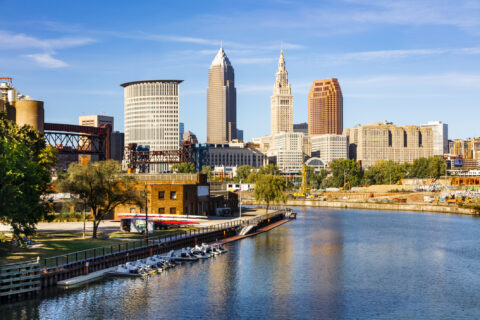From experiencing the COVID-19 pandemic to the opioid epidemic, Americans are struggling with mental health, and local governments are working on ways to help. The U.S. Surgeon General’s new report, “Our Epidemic of Loneliness and Isolation”, is a valuable resource for municipalities to bolster mental health in their communities.
The report highlights how loneliness and isolation drive negative health outcomes. Loneliness is an internal state of feeling like one’s social needs aren’t met. Social isolation is an external state of having few relationships, roles, and interactions with other people. Both harm our mental and physical health. According to the report, social isolation increases one’s risk of premature death as much as smoking up to 15 cigarettes a day.
Social isolation makes it difficult to access help, from personal support to professional healthcare. Economic and racial disparities exacerbate the problem when Americans who are Black, Hispanic, low-income, unhoused, or elderly already lack access to social infrastructure. Awareness and change are sorely needed because, while self-reports of social isolation rise every year, less than 20% of American adults recognize it as a major problem.
So, what can municipalities do? A major part of the solution is improving our social connections. Municipalities in particular can focus on the following policy areas.
Invest in Social Infrastructure and the Built Environment
Municipalities can invest in community infrastructure, partnerships, and the built environment to bring people together. This encourages both “strong” connections, where people build relationships with one another, and “weak” connections, where people have casual passing interactions. Municipalities can therefore support a wide range of social infrastructure to meet a wide range of needs.
Social infrastructure can look like:
- Libraries and playgrounds for youth to form strong connections with their peers.
- Quieter green spaces and religious centers preferred by the elderly.
- Benches and walkable streets that encourage more organic connections among people who are new to one another.
- Afterschool programs and community events that connect generations.
Another report, “Tackling Loneliness through the Built Environment” highlights more specific ways to encourage social connections through design.
In addition to the built environment, community organizations ranging from arts groups to restaurants often hold events that bring people together. Municipalities can support them while calling for nonprofit partners to help address community mental health.
Social infrastructure should be equitably accessible, especially for groups with the highest risk of social isolation. For example, strict loitering laws and unfair enforcement could discourage youth from connecting with friends if they lack sufficient public spaces. “Hostile architecture” that makes sitting and resting uncomfortable, often with the goal of displacing unhoused residents, can prevent residents from enjoying their time in public.
Embed Social Connection and Health into All Policies
The report highlights how public health is inseparable from other policy choices. Every department can impact public health, so every department should consider its ability to promote social connection.
Municipalities can embed social connection in policy and evaluate how existing policies may contribute to social isolation. For example:
- A zoning practice might isolate a community from green spaces.
- Healthcare partnerships can increase access to much-needed therapy.
- Funding arts and culture can provide more opportunities for connection and lift up diverse community groups.
Paid leave can give city employees more time to connect with their communities while improving public transit can make the city more accessible to youth and low-income residents. Through communication campaigns, municipalities can raise awareness of the importance of social connection and combat the stigma around mental health.
Ideas from public health can help here, such as trauma-informed social policy, which outlines how municipalities can reduce the risk of retraumatizing and stigmatizing residents. For example, an unhoused drug user might benefit from a “housing first” approach that provides the stability they need to recover. Some police calls can be diverted to mental health and community-response teams, who are trained to create safer outcomes in mental health emergencies. When community health workers and community members advocate for what they need, their on-the-ground knowledge can lead public health strategies.
Next Steps
The Surgeon General’s report highlights important steps municipalities can take to address social isolation. Some steps include:
- Exploring the report’s recommended actions for municipalities
- Reviewing policies and partnerships through the lens of social connection
- Connecting with the National League of Cities for resources, support, and potential initiatives
The urgent “Epidemic of Loneliness and Isolation” comes from a mix of underinvestment in healthcare, stigma around mental health, existing inequalities, and historic uncertainty for many Americans. Good policies can minimize the harm from disconnection and create more chances for a sense of trust and community to grow.
Every patient is also a resident, after all, embedded in a community and built environment that can help them thrive.
Resources:












